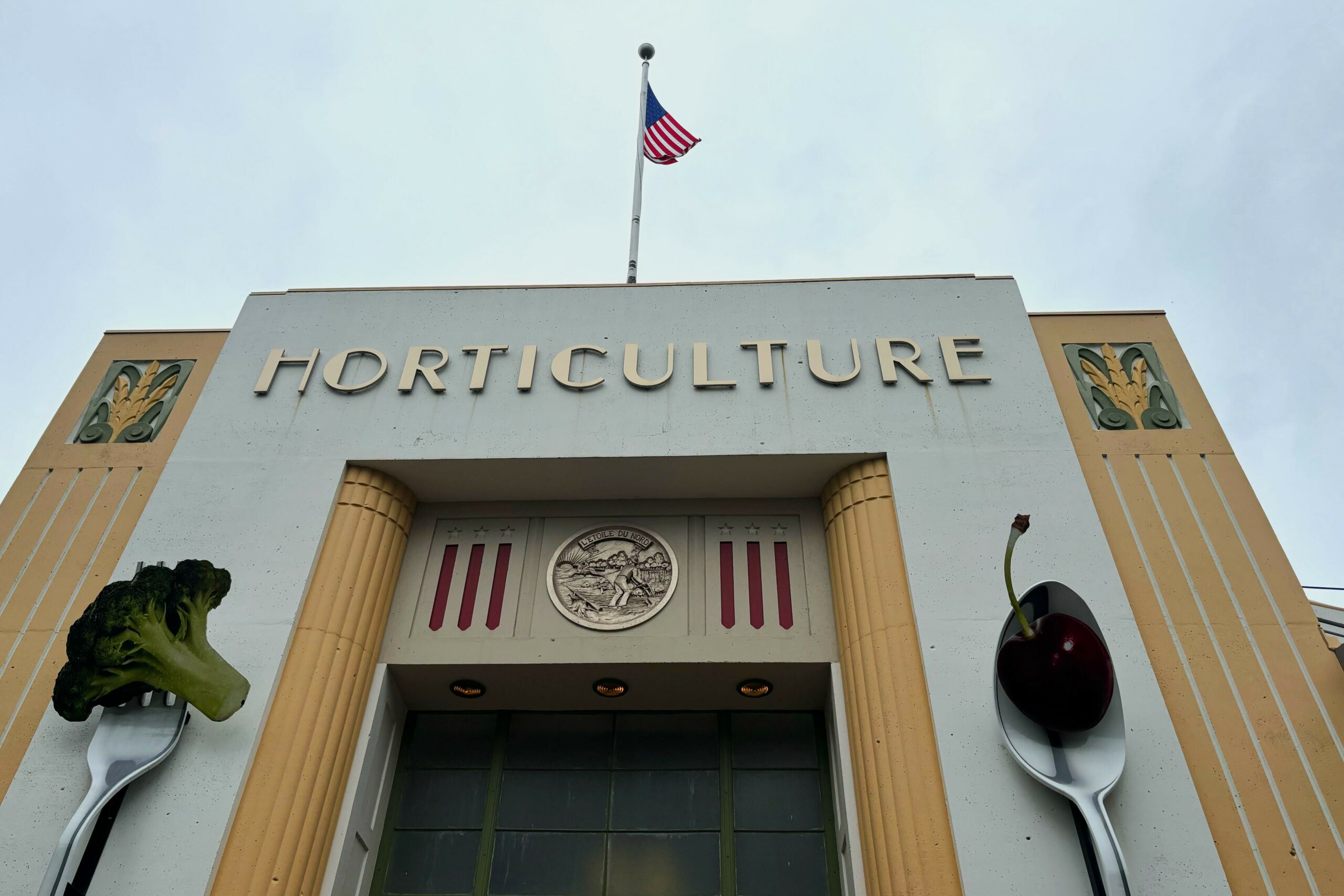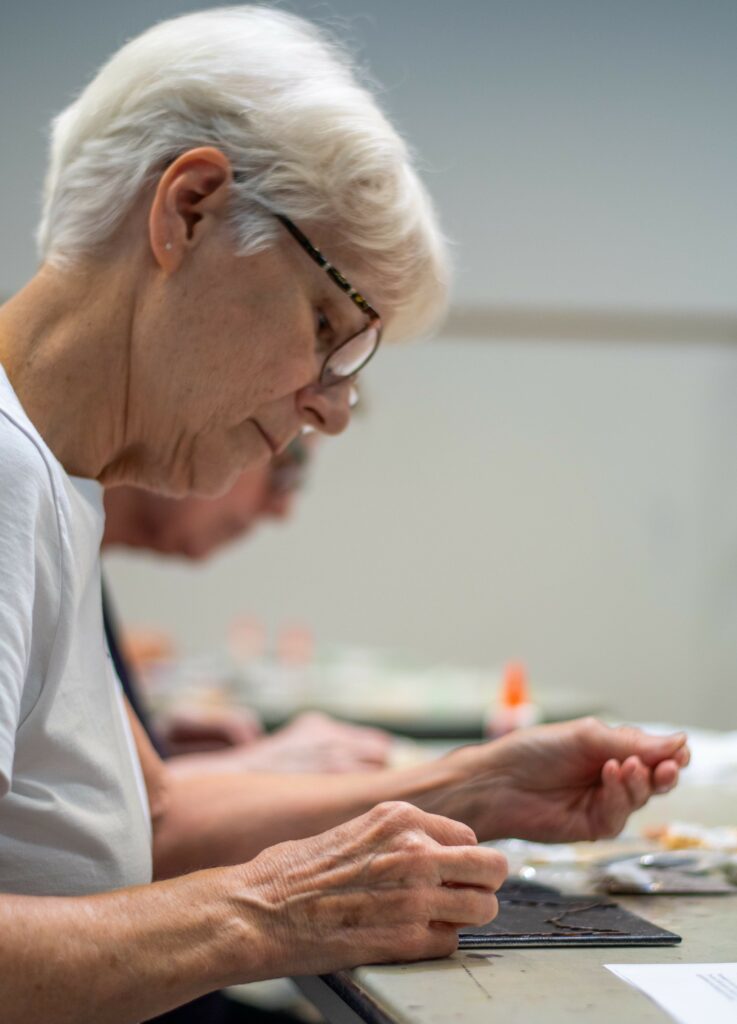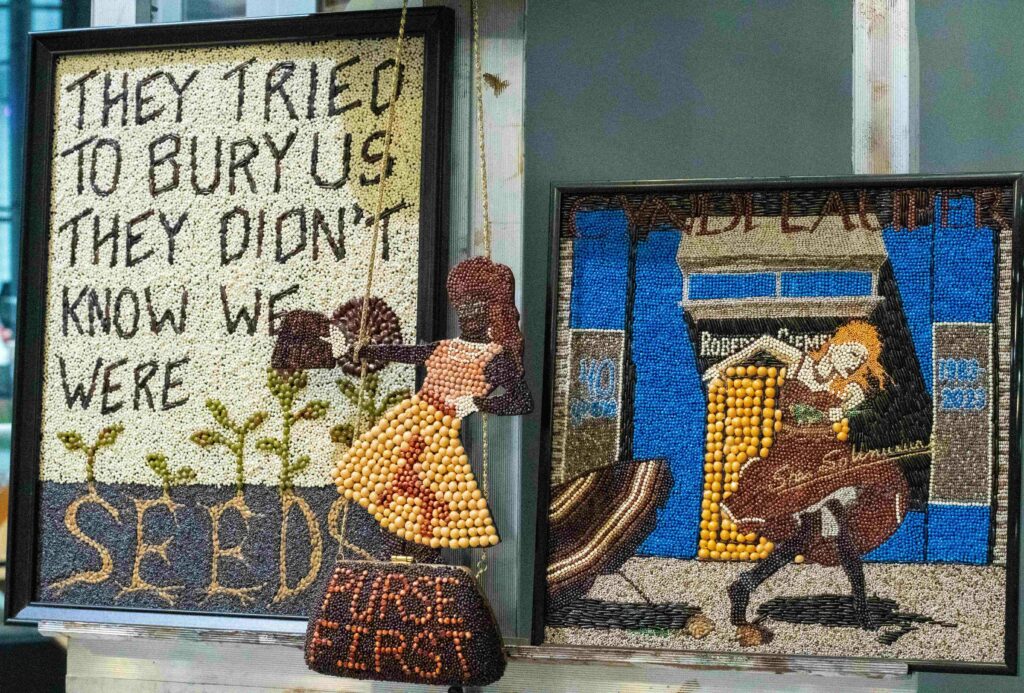Crop Art Students Head to the State Fair

Something seedy is growing at White Bear Center for the Arts. Under the expert guidance of Marta Shore, Assistant Superintendent of Crop Art and Scarecrow at the Minnesota State Fair, a group of artists honed their skills as they learned how to create crop art and submit their work to the State Fair. Starting in July, Marta held crop art classes and work sessions at WBCA to teach students how to create their seed mosaics. The introduction class filled in a snap and work sessions were even attended by veteran award-winning crop artist Dan Lindquist, who took second place in the Class 4 Advanced division this year.
Crop Art began in 1965 as a way to introduce fair-goers to Minnesota-grown crops. In the last 60 years, it has gained popularity as an art form and become a celebrated hallmark of the Minnesota State Fair. Artwork can depict anything but most often, submissions are inspired by pop culture: from puns and memes or celebrity portraits to political commentary.
Submissions to the competition are under seemingly strict guidelines, with the State Fair committee accepting submissions made only with seeds from Minnesota-grown farm crops, with no wild plant seeds, white rice, or sesame seeds allowed. But there’s one secret Marta tells students, “you make it, they put it up.”
As long as you adhere to the supply rules and the three no-nos of crop art (no swearing, no solicitation, no slander), artists will get their designs hung up at the Ag-Hort-Bee building. This has encouraged novice crop artists like Jean Kohs to submit. “It sounded like a very ‘Minnesotan’ thing to do, so I gave it a try. I have never even considered doing crop or seed art before.” She says after learning in the intro class that they display all rule-following submissions, she decided to make and submit a piece. Modeled after her and her family’s favorite children’s book, “A Day with Wilbur Robinson” by William Joyce, her piece hangs proudly in the Field Crop section of the building.

Nearby hangs a seeded loon made by Alissa Groff. “I’d long wanted to get involved, but honestly didn’t know where to start,” she says. After her mom spotted the Intro to Crop Art class in WBCA’s summer catalog, she signed up. “The breakdown [of the class] was really helpful for me and made the process really approachable,” she says. “I loved that the class was taught in a way that went through how everything works, why, the specifics of how to create, and where to find supplies.”

Thus went the creation of her loon, using tips, resources, and expertise shared by Marta who, despite all her years of experience, only moonlights as a crop artist.
By day, Marta teaches biostatistics at the University of Minnesota School of Public Health. In the almost 10 years that she’s been making crop art, she has won every ribbon but first place. Now, as superintendent, she has forgone the competition and decided to help others get into the craft instead.
In the month between her first class and the State Fair entry deadline, Marta taught her students about the history of crop art, including icons like Crop Art Queen Lillian Colton, (who won nine best-of-show ribbons in 11 years starting in 1966), selecting the right materials and executing intricate designs, and tools of the trade. They learned how to paint miniature seeds, strategies for placing hundreds of seeds on a board, and even how to apply to the State Fair competition.
Ahead of the State Fair opening day, there was a sense of pride and unbridled excitement. “I’ve loved telling people I’ve entered and having them say they’ll look for me,” Alissa said. And she’s already inspired to do more for next year. Jean was excited to share the moment with her family. “I’m looking forward to my grand-kids visiting the display and saying, ‘Look, that’s the one Nana made!’”

As you wander and eat your way through the Great Minnesota Get-Together, don’t forget to stop by the Ag-Hort building to peruse the crop art. See if you can spot an entry from Marta’s class at WBCA.
